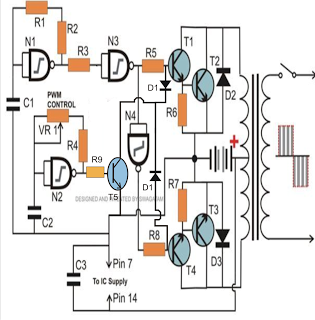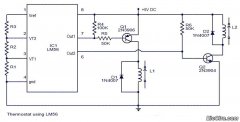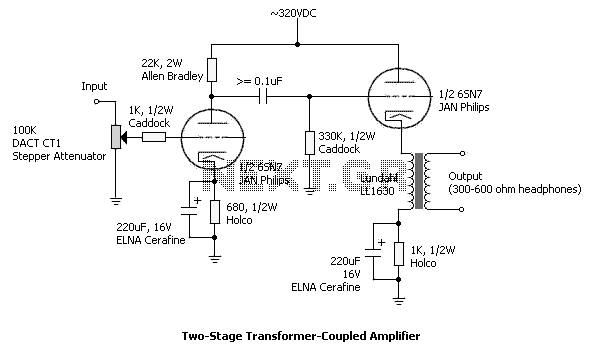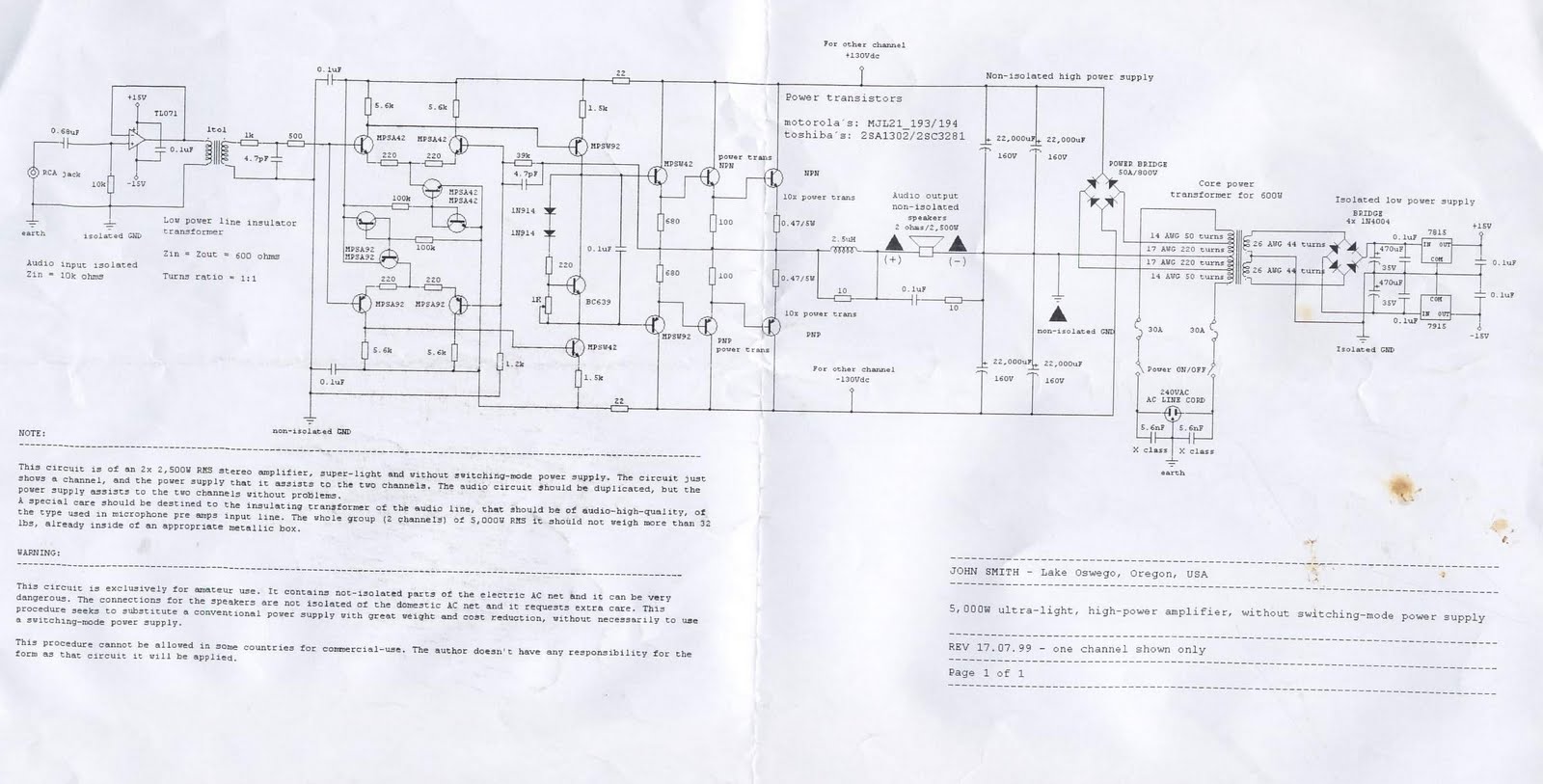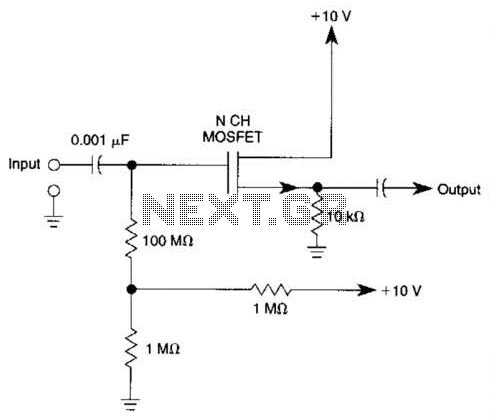
Basswave amplifier
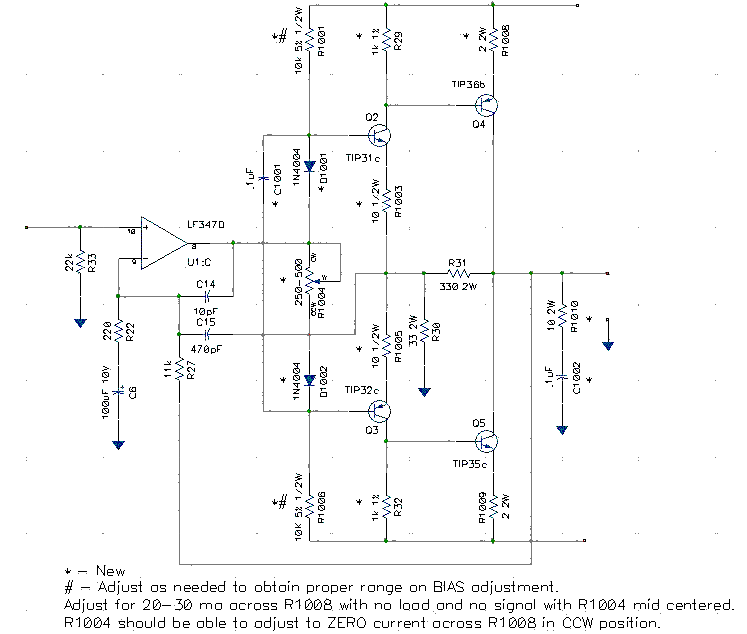
The JBL "Bass Wave" amplifier is a compact 100-watt amplifier featuring a built-in active filter that includes a single-pole high-pass filter at 10 Hz and a single-pole low-pass filter at 85 Hz. Priced at an affordable $50 USD, it offers both line and speaker-level inputs, a volume control for level matching, and an "auto signal sensing power switch." The build quality is reasonable; however, it is not classified as an "audiophile" or high-fidelity amplifier due to certain design compromises made to maintain a low price point. Potential improvements could be made with some modifications. The Bass Wave amplifier utilizes a Class-B output stage, while most audio amplifiers typically employ a Class-AB output stage, as Class-B circuits are susceptible to crossover distortion, which can adversely affect output at low volumes. This distortion may manifest as fuzziness or a raspy character at low levels, although it is less significant in a subwoofer design since the effect is less noticeable at lower frequencies. The output devices in the Bass Wave amplifier are arranged in a common collector configuration, which increases the voltage gain of the stages but also raises the output impedance, thereby reducing current dumping and the damping factor of the amplifier. The voltage gain should ideally originate from the driver stage rather than the output devices. A correction from Jason Cuadra indicates that the amplifier features a composite two-stage common emitter configuration with local feedback set by resistors R31 and R30, establishing a gain of 10. Bill Wilson of the DIY Loudspeakers List described the circuit design of the Bass Wave amplifier as follows: "A low-pass input network feeds the main amplifier, which is an LF347 op-amp driving a modified Darlington current amplifier wired to provide voltage gain. The LF347 is a high-quality op-amp with a gain bandwidth product of 4 MHz and FET inputs. The output transistors lack quiescent current biasing, and the bases of the first-stage output transistors (TIP31C and TIP32C) are copper bound, resulting in 1.2 volts of crossover distortion. There are no emitter resistors present, not even in the second-stage TIP35C/TIP36C emitters. The TIP35C/TIP36C transistors are rated to drive 4-ohm loads, but the reliability of the power supply is uncertain. The circuit includes 4700 µF capacitors for filtering the rectified DC, and a load test of the transformer is advisable for safety. A thermistor on the heat sink is connected to an op-amp comparator that will shut down the amplifier at a specified temperature, but there is no short-circuit protection for the output transistors. An audio signal detection circuit activates the front panel LED, though the internal power amplifier remains powered on. Proposed modifications from members of the DIY Loudspeakers list include suggestions by Jason Cuadra to enhance output current capability by doubling the filter capacitors, upgrading to more robust rectifiers (such as 5A 200V), and paralleling the output transistors with an emitter resistor for each to ensure even current sharing. To bias the amplifier into Class AB operation, a complete redesign of the output stage would be necessary, involving additional power resistors, smaller resistors, constant current sources composed of two transistors and a resistor, and a VBE multiplier stage made of a transistor and two resistors, which would reduce the output stage gain from 10 to 3 or 4 while requiring a reassessment of feedback loop stability.
The schematic of the JBL "Bass Wave" amplifier comprises several key components that work together to deliver its functionality. The amplifier begins with a low-pass input network that filters incoming audio signals before they reach the main amplifier stage. The main amplification is handled by an LF347 operational amplifier, which is known for its high gain bandwidth product and FET input characteristics, making it suitable for audio applications. This op-amp drives a modified Darlington configuration that acts as a current amplifier, enhancing the overall output capability while also providing voltage gain.
The output stage utilizes TIP31C and TIP32C transistors, which are configured to work in tandem without emitter resistors, leading to potential crossover distortion. The design features a thermistor for thermal management, providing a safety mechanism that shuts down the amplifier if the temperature exceeds safe limits. The absence of short-circuit protection necessitates caution during operation, particularly when driving lower impedance loads.
For those considering modifications, the proposed enhancements focus on increasing the amplifier's robustness and performance. Suggestions include upgrading the power supply components, such as rectifiers and filter capacitors, to improve current handling capabilities. Additionally, the introduction of emitter resistors in the output stage would facilitate better current sharing among the transistors, mitigating distortion and improving overall sound quality. These modifications, while promising, require careful implementation and testing to ensure stability and reliability in the amplifier's operation.The JBL "Bass Wave"amplifier is a small 100-watt amplifier with built-in active filter with a single-pole high-pass at 10 Hz combined with a single-pole lowpass at 85 Hz. It costs an amazingly low $50 US. It also comes with line and speaker-level inputs and a volume control for level-matching, and an "auto signal sensing power switch".
It also fea tures reasonable build quality. However, it is not an "audiophile" or even hifi-quality amplifier - a few corners have been cut in the design inorder to keep the price so low. However, it may be possible to improve it a bit with a few tweaks. The Bass Wave amplifier uses a "class-B" output stage. Most audio amplifiers use a "class-AB"output stage because class-B circuits are prone to crossover distortion, which audibly affects the output at low volumes.
The notch distorion may show as a fuzziness or raspy character at very low levels. Note that this is of less consequence in a subwoofer design, as the effect is less noticeable at low frequencies, and how many times have you listened to a subwoofer at low volumes The output devices in the Bass Wave amplifier are used in a common collector configuration. While this raises the voltage gain of the stages (and is a cheap way to save parts), it also raises the output impedance, which in turn reduces the current dumping and damping factor of the amplifier.
The voltage gain should come from the driver stage of the amplifier, not the output devices. (Correction - Jason Cuadra says that it is a composite 2 stage common emitter with local feedback set by R31 and R30, setting gain to 10). Bill Wilson of the DIYLoudspeakers List described the circuit design of the Bass Wave amplifier as follows in message to the List (which I`ve edited slightly here): " A low pass input network feeds the main amplifier which is a LF347 op amp driving a modified darlington current amplifer which is wired to also give voltage gain.
The LF347 is a nice op amp with gain bandwidth product of 4 Mhz and FET inputs. There is no quiescent current biasing of the output transistors. The bases of the 1st stage output transistors (TIP31C and TIP32C) are copper bound to each other giving 1. 2 volts of crossover distortion. There are no emitter resistors anywhere, not even in the 2nd stage TIP35C/TIP36C emitters. As far as driving 4 ohms go, the TIP35C/TIP36C transistors have the current rating to handle this but I don`t know about the power supply.
There are 4700uF capacitors filtering the rectified DC and I would want to load test the transformer before feeling safe about it. There is a thermistor on the heat sink wired to an op-amp comparator which will shut the amp down at some temperature, but note that there is no short circuit protection on the output transistors.
There is an audio signal detection circuit that drives the front panel LED, but the power amp insided is not powered down, just the LED. " Listed below are some modifications to the amplifier that have been PROPOSEDby members of the DIY Loudspeakers list.
These modifications have not actually been tried out, but they do sound good enough for consideration: Jason Cuadra : "To increase output current capability, double up the filter caps, change to beefier rectifiers. ( a la 5A 200V ) and double the output transistors(in parallel), but with an emitter resistor for each one of about 0.
1 ohm, to make them share current. To bias it into class AB would require re-designing the whole stage: - It would require an additional 2 power resistors, 2 smaller resistors, 2 constant current sources each made of 2 transistors and a resistor, and a VBE multiplier stage made of a transistors and 2 resistors; reducing the gain of the output stage (from 10 to 3 or 4), and re-checking the feedback loop stability. " This is a circuit showing some of the some mods I talked about, with the addition of current limiting / short cct protection, and this is another circuit show
🔗 External reference
The schematic of the JBL "Bass Wave" amplifier comprises several key components that work together to deliver its functionality. The amplifier begins with a low-pass input network that filters incoming audio signals before they reach the main amplifier stage. The main amplification is handled by an LF347 operational amplifier, which is known for its high gain bandwidth product and FET input characteristics, making it suitable for audio applications. This op-amp drives a modified Darlington configuration that acts as a current amplifier, enhancing the overall output capability while also providing voltage gain.
The output stage utilizes TIP31C and TIP32C transistors, which are configured to work in tandem without emitter resistors, leading to potential crossover distortion. The design features a thermistor for thermal management, providing a safety mechanism that shuts down the amplifier if the temperature exceeds safe limits. The absence of short-circuit protection necessitates caution during operation, particularly when driving lower impedance loads.
For those considering modifications, the proposed enhancements focus on increasing the amplifier's robustness and performance. Suggestions include upgrading the power supply components, such as rectifiers and filter capacitors, to improve current handling capabilities. Additionally, the introduction of emitter resistors in the output stage would facilitate better current sharing among the transistors, mitigating distortion and improving overall sound quality. These modifications, while promising, require careful implementation and testing to ensure stability and reliability in the amplifier's operation.The JBL "Bass Wave"amplifier is a small 100-watt amplifier with built-in active filter with a single-pole high-pass at 10 Hz combined with a single-pole lowpass at 85 Hz. It costs an amazingly low $50 US. It also comes with line and speaker-level inputs and a volume control for level-matching, and an "auto signal sensing power switch".
It also fea tures reasonable build quality. However, it is not an "audiophile" or even hifi-quality amplifier - a few corners have been cut in the design inorder to keep the price so low. However, it may be possible to improve it a bit with a few tweaks. The Bass Wave amplifier uses a "class-B" output stage. Most audio amplifiers use a "class-AB"output stage because class-B circuits are prone to crossover distortion, which audibly affects the output at low volumes.
The notch distorion may show as a fuzziness or raspy character at very low levels. Note that this is of less consequence in a subwoofer design, as the effect is less noticeable at low frequencies, and how many times have you listened to a subwoofer at low volumes The output devices in the Bass Wave amplifier are used in a common collector configuration. While this raises the voltage gain of the stages (and is a cheap way to save parts), it also raises the output impedance, which in turn reduces the current dumping and damping factor of the amplifier.
The voltage gain should come from the driver stage of the amplifier, not the output devices. (Correction - Jason Cuadra says that it is a composite 2 stage common emitter with local feedback set by R31 and R30, setting gain to 10). Bill Wilson of the DIYLoudspeakers List described the circuit design of the Bass Wave amplifier as follows in message to the List (which I`ve edited slightly here): " A low pass input network feeds the main amplifier which is a LF347 op amp driving a modified darlington current amplifer which is wired to also give voltage gain.
The LF347 is a nice op amp with gain bandwidth product of 4 Mhz and FET inputs. There is no quiescent current biasing of the output transistors. The bases of the 1st stage output transistors (TIP31C and TIP32C) are copper bound to each other giving 1. 2 volts of crossover distortion. There are no emitter resistors anywhere, not even in the 2nd stage TIP35C/TIP36C emitters. As far as driving 4 ohms go, the TIP35C/TIP36C transistors have the current rating to handle this but I don`t know about the power supply.
There are 4700uF capacitors filtering the rectified DC and I would want to load test the transformer before feeling safe about it. There is a thermistor on the heat sink wired to an op-amp comparator which will shut the amp down at some temperature, but note that there is no short circuit protection on the output transistors.
There is an audio signal detection circuit that drives the front panel LED, but the power amp insided is not powered down, just the LED. " Listed below are some modifications to the amplifier that have been PROPOSEDby members of the DIY Loudspeakers list.
These modifications have not actually been tried out, but they do sound good enough for consideration: Jason Cuadra : "To increase output current capability, double up the filter caps, change to beefier rectifiers. ( a la 5A 200V ) and double the output transistors(in parallel), but with an emitter resistor for each one of about 0.
1 ohm, to make them share current. To bias it into class AB would require re-designing the whole stage: - It would require an additional 2 power resistors, 2 smaller resistors, 2 constant current sources each made of 2 transistors and a resistor, and a VBE multiplier stage made of a transistors and 2 resistors; reducing the gain of the output stage (from 10 to 3 or 4), and re-checking the feedback loop stability. " This is a circuit showing some of the some mods I talked about, with the addition of current limiting / short cct protection, and this is another circuit show
🔗 External reference
